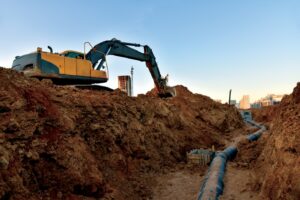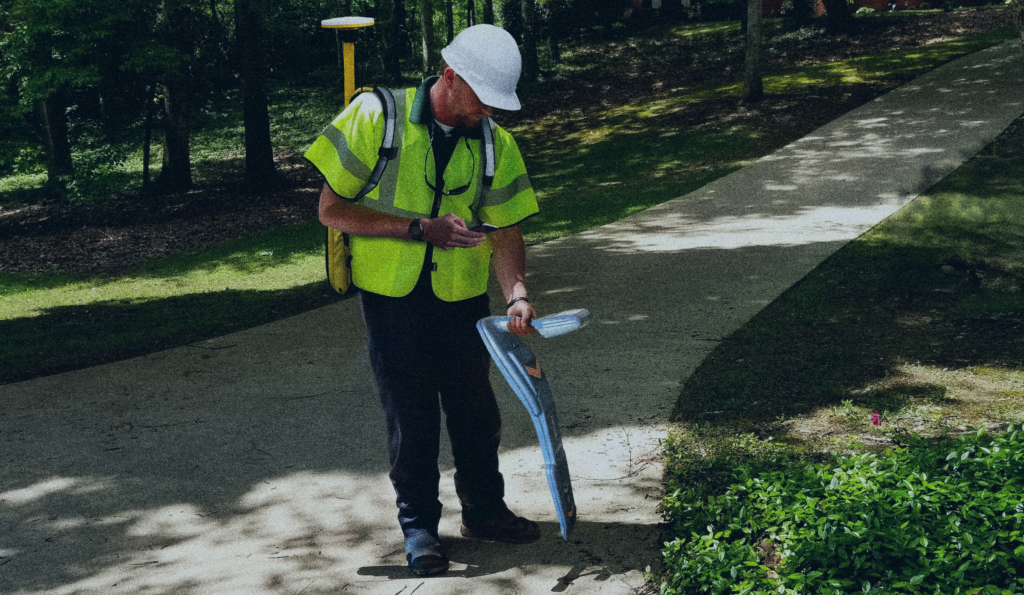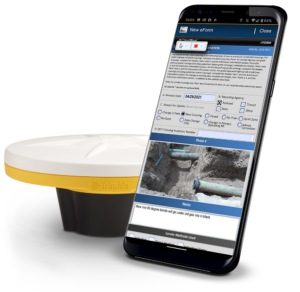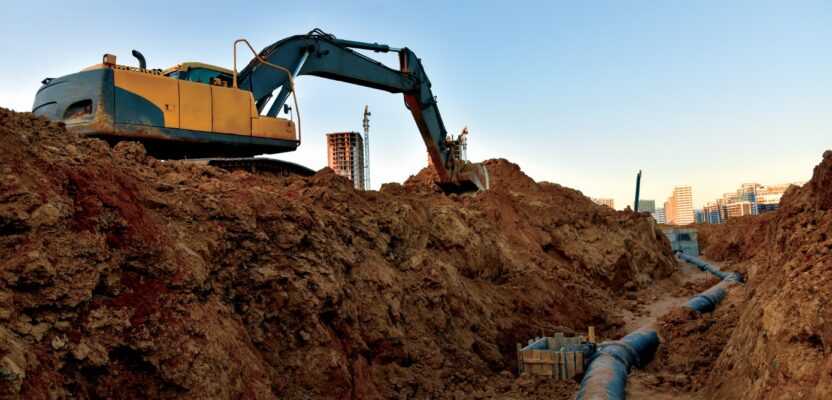Prostar and KCI Technologies look beneath the surface to save time and money
The devil is in the details of any construction project, but those involving work close to underground utilities can be the most dangerous. Nearly missing or even sometimes striking utility lines is a common occurrence across the nation and was a regular concern of KCI Technologies, leading them to find ProStar two years ago.
Since that connection, operations have improved for KCI Technologies, with fewer mishaps.
“Like other companies, they would sometimes hit utility lines or have near-misses, so they started looking for a better way to avoid these situations,” said Peter Srajer, chief scientist for ProStar, a system that allows employees to communicate from field to office and back. “They wanted to ensure they knew where to dig before they went there.”

Construction equipment damaging underground utilities is estimated to cause up to $30 billion a year in societal damages.
But how common are such strikes? Much more common than might seem at first blush.
“Strikes occur every day, many times a day throughout the U.S.,” Srajer said. “In most cases there are no injuries. But it’s an entirely different matter if you hit power lines or water lines or telecommunication lines.”
The costs to the offending company can be astronomical in such cases.
KCI tapped ProStar for help because the tech company’s platform was developed specifically for firms involved in subsurface utility work. The software’s cloud-based system means data is backed by Amazon Web Services and always available. With access to information documented from workers onsite through the ProStar platform, employees can create an accurate record of site conditions that informs future construction work and can reduce paid manhours.
For KCI Technologies, adopting the platform was an immediate timesaver by shortening employee hours needed for creating field sketches. In the past the firm would send an employee out in the field to locate utilities, with the task taking six hours in the field, plus a couple hours of office work for the documentation after. With ProStar, a minimum of 90 minutes was shaved from this task since the office work part of the task was eliminated.
Through an initial six-month pilot project with KCI Technologies, ProStar sold the large locator and engineering firm on the benefits of the tech company’s system.

A company called ProStar works with construction companies to locate and avoid damage to buried utility assets.
“They came to ProStar looking for something that was more robust in collecting their data. They were looking for something more permanent than the system they had in place at the time… Over that six-month period, for each crew we were able to save one-and-a-half to two hours per crew per day,” Srajer said.
And what about the cost of eliminating KCI Technologies’ worries of utility strikes and near-misses? That might be priceless.
The quandary of deftly avoiding utilities while performing contracting work is no simple task—if it were, damage to utilities done by contractors wouldn’t be so widespread a problem.
The Common Ground Alliance (CGA), the national nonprofit trade association dedicated to protecting underground utility lines, people who dig near them, and their communities, estimates $30 billion in societal costs directly result from damages to critical underground infrastructure in communities across the country. These costs include direct costs like facility repair and indirect costs such as property damage, medical expenses, and business closures.
Each year the CGA issues a Damage Information Reporting Tool (DIRT) report to help understand and analyze damages to buried infrastructure in North America. The data shows that every 62 seconds there is an underground utility strike in the U.S. Those strikes resulted in more that 2,000 injuries and 400 deaths.
The analysis of 2021 data suggests that six root causes—including not notifying the 811 call center; failure to pothole and/or maintain sufficient clearance; facilities not marked or marked inaccurately due to locator error; and other improper excavation practices— are responsible for more than 76 percent of the damage.
DIRT analyzed more than 230,000 reports on damages and near misses in North America for 2021, focusing on the 203,618 unique damages reported into DIRT.
ProStar’s 14-year-old platform fills an important need by helping locating companies, engineering firms, and others avoid costly and disruptive utility strikes that are expensive for the contractor and others affected by them.

ProStar’s Pointman platform provides detailed, color-coded information to help construction companies avoid underground utilities.
Due to the reliability of ProStar’s PointMan system, its use by both private firms and government agencies is increasing. A few state’s departments of transportation are happy with the platform and have been using it for years. Colorado Department of Transportation is one of them, using the platform with future workers in mind. “They’re creating a legacy system where all the information is stored,” Srajer said.
Because of the nature of this tech tool, the integrity of the information related to any documented utility lines becomes increasingly reliable going forward, since more detailed information means a more accurate record of site conditions. “Your system of record becomes better and better the more times you use it,” Srajer said.
Also appealing to some of ProStar’s users is the fact that the software is more or less agnostic with regards to other technologies. The PointMan tool enables users to graft data into the system from most GPS or locator devices.
The tool’s interoperability also is reflective of its general purpose of easily collecting and arranging all of the pertinent information related to a project. Pairing that information with a GPS or locator device provides safer worksites, reduces injuries, and decreases company losses due to utility strikes.
The ease of use of the platform helps. With just a few hours of using the system, users can begin to see benefits from it. The return-on-investment time for this tool is quite quick—maybe a month for a small firm of three or so employees, Srajer said.
Greater confidence in recorded site conditions helps avoid mishaps, and better data integrity also saves times.

